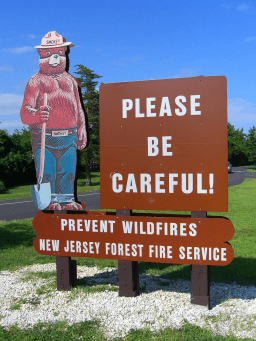National Start Seeing Monarchs Day
National Start Seeing Monarchs Day is observed next on Saturday, May 2nd, 2026 (287 days from today).

National Start Seeing Monarchs Day on the first Saturday of May every year as part of the efforts for raising awareness about the need to preserve the Monarch butterfly to keep the insect from adding to the list of extinct species.
Monarch butterfly belongs to milkweed butterfly. It may be the most familiar North American butterfly because of its recognizable orange and black wings. Monarchs are typically 3 1/2 to 4 ″ in size. In the fall, they will migrate to the south because of warmer climates. In the spring, they head back further north.
Why National Start Seeing Monarchs Day?
National Start Seeing Monarchs Day is a special day for all insect enthusiasts and biologists who love the study of insects. It is specifically designed to raise awareness about the conservation of Monarch butterflies. It also ensures that this very rare insect does not add to the list of long-extinct species.
The Monarch butterfly, also known as the milkweed butterfly, is a well-known insect common in the northern regions of the United States. It is famous for the orange and black patterns on its wings, and they typically grow to 3.5 to 4 inches in size. Monarchs migrate south in warm climates and return north in spring.
Monarch butterflies have a preferred habitat in savannas, grasslands, grasslands and roadsides. They are also a common fly found around Nebraska around June. The females lie close to 400 eggs and parasitize the undersides of milkweed leaves. These eggs then hatch into caterpillars within three days if the weather is favorable.
The caterpillar's main food is milkweed for two weeks, making them toxic food for birds during this time. After the caterpillar stage, they develop into cocoons before undergoing metamorphosis to become adults within 12 to 14 days.
Some interesting truths about National Start Seeing Monarchs Day
There are many interesting facts about this day including:
- The breeding season of monarch butterflies begins in spring.
- Most flowering plants, especially native species, are excellent sources of nectar for monarch butterflies.
- The butterflies range in size from 3-4 inches.
- Monarch butterflies will always migrate to warmer climates in the fall and return in the spring.
- Monarch butterflies can travel up to 250 miles in a day.
- Since the last two decades, the number of monarch butterfly species has been declining sharply.
- Milkweed is essential for the existence of monarch butterflies.
- The succulent plant is a perennial flowering plant that feeds the monarch butterfly during its early stages of life by providing nectar and is the only plant on which the monarch butterfly lays eggs.
Celebrating National Start Seeing Monarchs Day
- Post on social media
The first and most basic way to observe this remarkable day is to post on social media using the #NationalStartSeeingMonarchsDay handler and then share it on your social networks afterwards. This will go a very long way in ensuring that people from different parts of the world take notice of this wonderful day. They can also join in to celebrate, appreciate and help preserve this remarkable butterfly.
- Planting a succulent tree
You can also observe this wonderful day and help conserve this endangered species by planting a jujube tree in your backyard. This will attract monarch butterflies because native seaweed is an attractive route for them to pollinate. Without the milkweed, it would have been easy for these remarkable insects to go extinct. This is because marine algae form their basic food at an early stage in this butterfly's life, which in turn is crucial to their survival.
- Create a safe environment for them
Another way to observe this amazing species is to make the environment as safe as possible, especially during the season in which they are known to appear. To do this, you can avoid the use of herbicides, pesticides and even genetically modified plants that affect the diet of this amazing insect. You can also pass this precaution on to other low- and large-scale farmers around you so that you can all work together to preserve this amazing but endangered species before it's too late.
Observed
National Start Seeing Monarchs Day has been observed the first Saturday in May.Dates
Saturday, May 4th, 2024
Saturday, May 3rd, 2025
Saturday, May 2nd, 2026
Saturday, May 1st, 2027
Saturday, May 6th, 2028
Founded by
National Day Calendar on April 22nd, 2015


